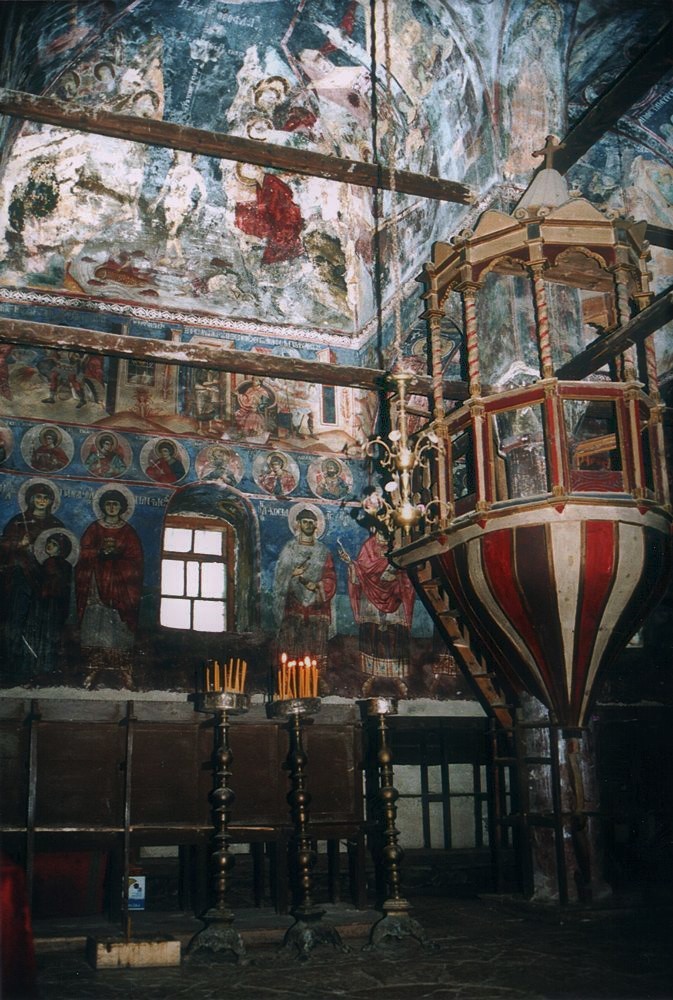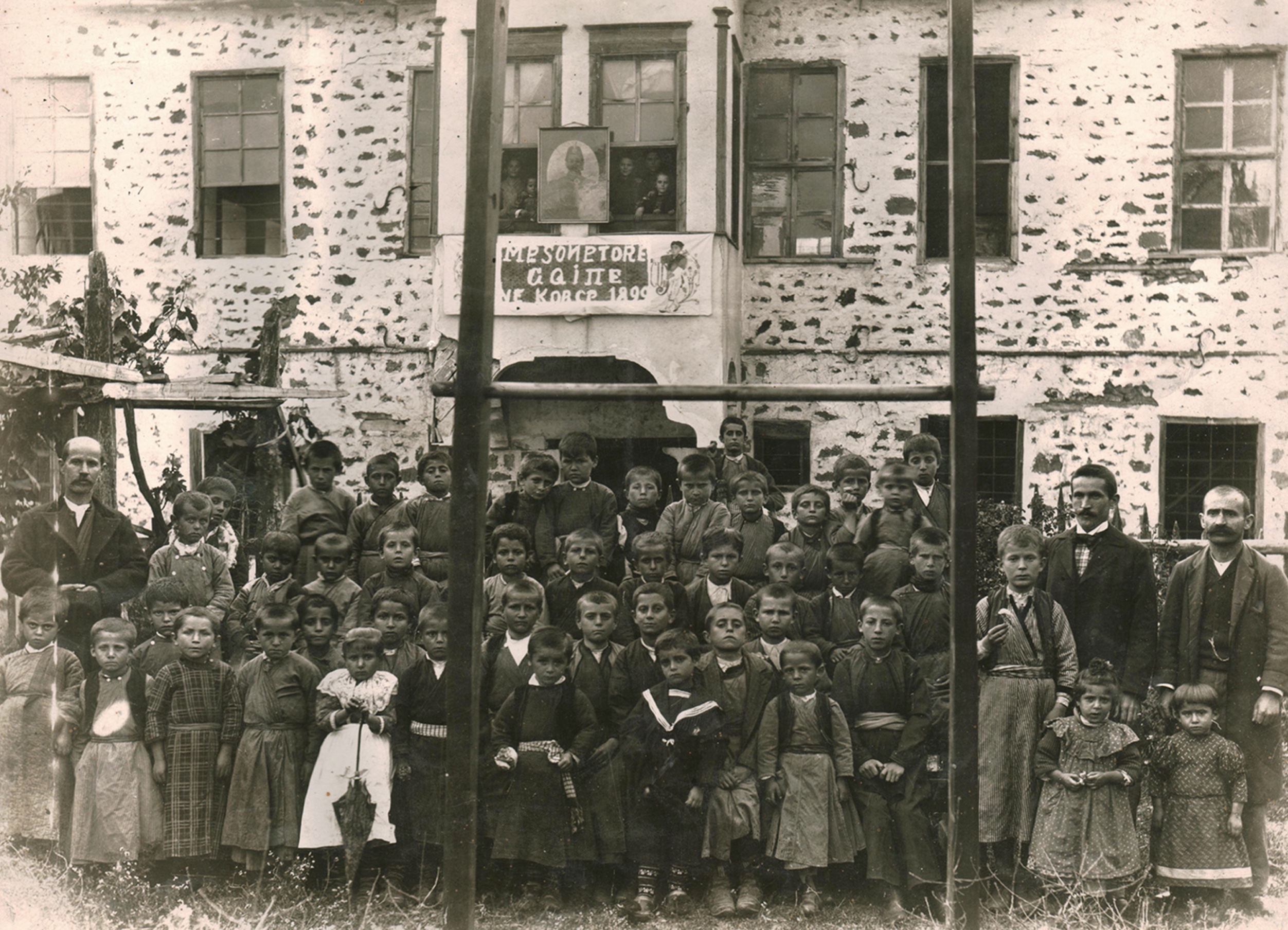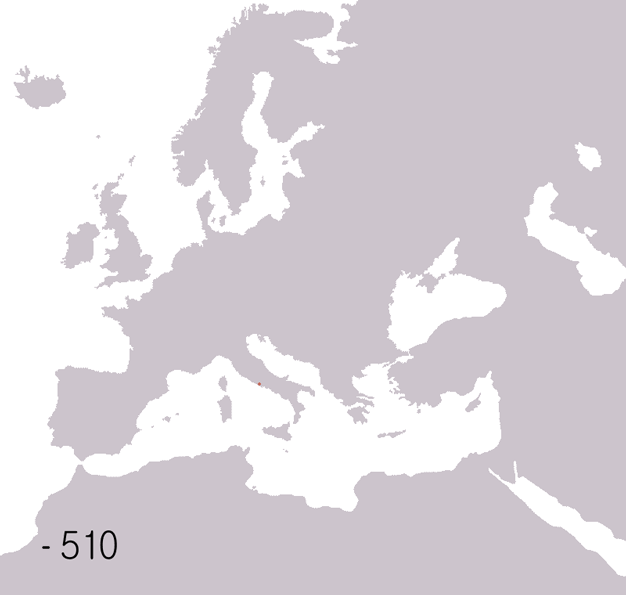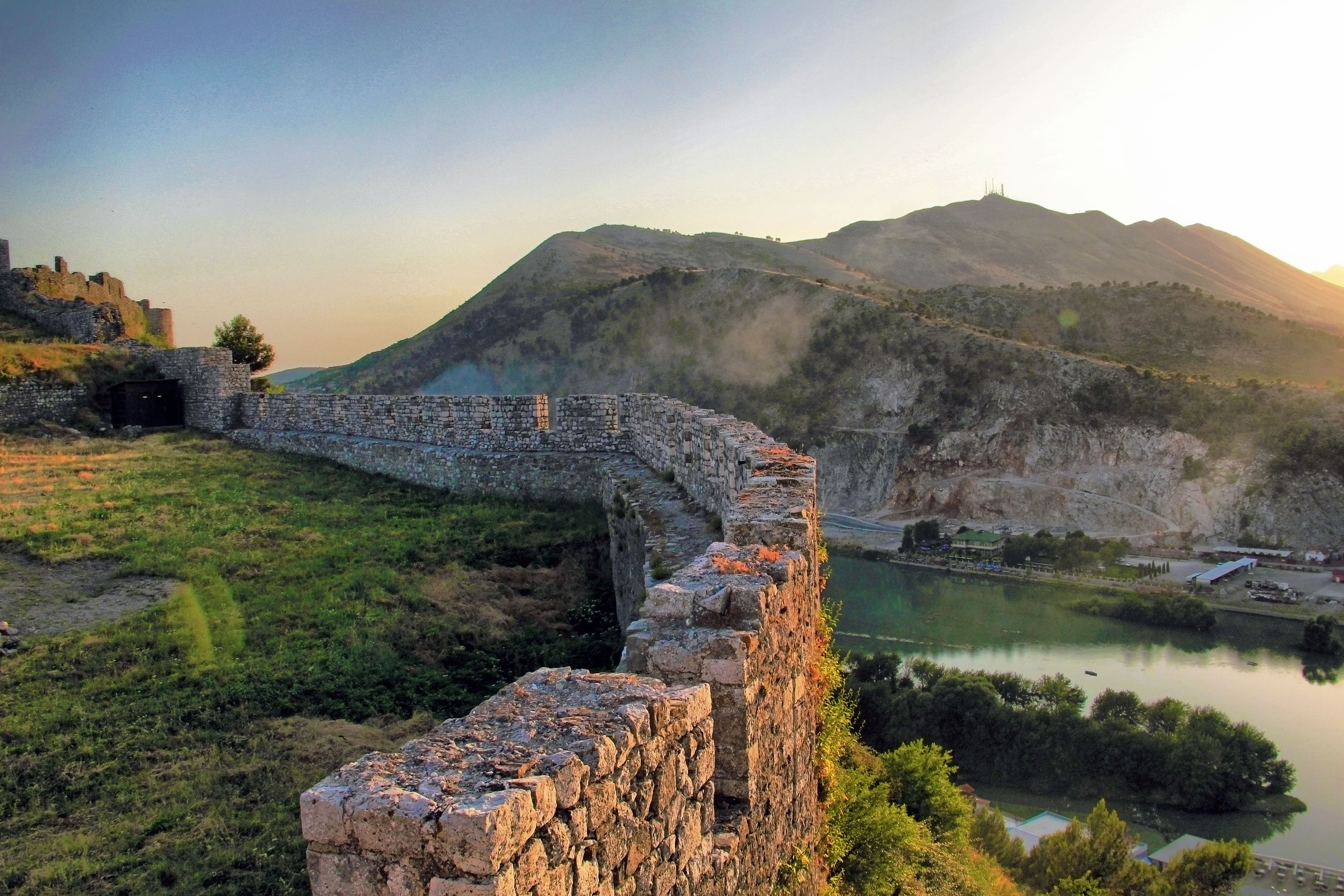 |
Architecture In Albania
The architecture of Albania ( ) is a reflection of Albania's historical and cultural heritage. The country's architecture was influenced by its location within the Mediterranean Basin and progressed over the course of history as it was once inhabited by numerous civilisations including the Illyrians, Ancient Greeks, Ancient Rome, Romans, Byzantine Empire, Byzantines, Venetian Empire, Venetians, Ottoman Empire, Ottomans as well as modern Austro-Hungarian empire, Austro-Hungarians and Italians. In addition, missionaries, invaders, colonisers and traders brought cultural changes that had a large profound effect on building styles as well as techniques. During classical antiquity, cities and towns in Albania have evolved from within the castle to include dwellings, religious and commercial structures, with constant redesigning of town squares and evolution of building techniques. Although there are prehistoric and classical structures in the country, which effectively begins with con ... [...More Info...] [...Related Items...] OR: [Wikipedia] [Google] [Baidu] |
|
Amantia
Amantia (; ) was an ancient city and the main settlement of the Amantes, traditionally located in southern Illyria in classical antiquity. In Hellenistic times the city was either part of Illyrian kingdom, Illyria or Epirus (ancient state), Epirus. In Ancient Rome, Roman times it was included within Illyris, Epirus Nova, in the Macedonia (Roman province), province of Macedonia. The site has been identified with the village of Ploçë, Vlorë County, Albania. Amantia was designated as an Protected areas of Albania#Archaeological Parks, archaeological park on 7 April 2003 by the government of Albania. The massive walls of Amantia were built before the end of the 4th century BC, and literary sources report them as an Illyrians, Illyrian rather than Epirus (ancient state), Epirote or Macedonian foundation. Later Amantia acquired the trappings of a Hellenistic town. In 230 BC Amantia became part of the Koinon Epirote League, Epirus. Amantia received sacred ancient Greek envoys, kno ... [...More Info...] [...Related Items...] OR: [Wikipedia] [Google] [Baidu] |
|
 |
Voskopojë
Moscopole or Voskopoja (; , with several other variants; ) is a village in Korçë County in southeastern Albania. During the 18th century, it was the cultural and commercial center of the Aromanians. At its peak, in the mid 18th century, it hosted the first printing house in the Ottoman Balkans outside Constantinople, educational institutions and numerous churches. It became a leading center of Greek culture but also with elements of Albanian and Aromanian culture, all with great influence from Western civilization. One view attributes the decline of the city to a series of raids by Muslim Albanian bandits. Moscopole was initially attacked and almost destroyed by those groups in 1769 following the participation of the residents in the preparations for a Greek revolt supported by the Russian Empire. Its decline culminated with the destruction of 1788 and the flight of its population. Moscopole, once a prosperous city, was reduced to a small village by Ali Pasha of Ioannina. ... [...More Info...] [...Related Items...] OR: [Wikipedia] [Google] [Baidu] |
 |
Berat
Berat (; sq-definite, Berati) is the List of cities and towns in Albania, ninth most populous city of Albania and the seat of Berat County and Berat Municipality. By air, it is north of Gjirokastër, west of Korçë, south of Tirana, and east of Fier. Berat is located in the south of the country. It is surrounded by mountains and hills, including Tomorr on the east that was declared a Tomorr National Park, national park. The river Osum (river), Osum (total length ) runs through the city before it empties into the Seman (river), Seman within the Myzeqe, Myzeqe Plain. The municipality of Berat was formed at the 2015 local government reform by the merger of the former municipalities Berat, Otllak, Roshnik, Sinjë, and Velabisht, that became municipal units. The seat of the municipality is the city Berat. The total population is 62,232 as of the 2023 census, in a total area of . Berat, designated a UNESCO World Heritage Site in 2008, comprises a unique style of Architecture of ... [...More Info...] [...Related Items...] OR: [Wikipedia] [Google] [Baidu] |
 |
Korçë
Korçë (; sq-definite, Korça) is the List of cities and towns in Albania, eighth most populous city of Albania and the seat of Korçë County and Korçë Municipality. The total population of the city is 51,152 and 75,994 of Korçë municipality (2011 census), in a total area of . It stands on a plateau some Above mean sea level, above sea level, surrounded by the Morava Mountains. The area of the Old Bazaar of Korçë, Old Bazaar, including Mirahori Mosque, Korçë, Mirahori Mosque, is considered as the urban core of the city. Founded by the local Ottoman Empire, Ottoman Albanians, Albanian nobleman Iljaz Bej Mirahori, Ilias Bey Mirahori, the urban area of Korçë dates back to the late 15th century and the beginning of the 16th century, however its actual physiognomy was realized in the 19th century, during a period that corresponds with the rapid growth and development of the city. The Old Bazaar has played a dominant role in Albania's market history. Korçë is the larges ... [...More Info...] [...Related Items...] OR: [Wikipedia] [Google] [Baidu] |
 |
Fall Of The Western Roman Empire
The fall of the Western Roman Empire, also called the fall of the Roman Empire or the fall of Rome, was the loss of central political control in the Western Roman Empire, a process in which the Empire failed to enforce its rule, and its vast territory was divided among several successor polities. The Roman Empire lost the strengths that had allowed it to exercise effective control over its Western provinces; modern historians posit factors including the effectiveness and numbers of the army, the health and numbers of the Roman population, the strength of the economy, the competence of the emperors, the internal struggles for power, the religious changes of the period, and the efficiency of the civil administration. Increasing pressure from invading peoples outside Roman culture also contributed greatly to the collapse. Climatic changes and both endemic and epidemic disease drove many of these immediate factors. The reasons for the collapse are major subjects of the hi ... [...More Info...] [...Related Items...] OR: [Wikipedia] [Google] [Baidu] |
|
Tirana Mosaic
The Tirana Mosaic () is a landmark in Tirana, Albania. It is believed to have been part of a 3rd-century Roman house, referred to by local archeologists as the 'Villa rustica'. Later, in the 5th and 6th centuries, a Paleo-Christian Basilica was built around this site. It was declared a cultural monument of the first category in June 1973. The ruins of this Paleo-Christian Basilica were discovered in 1972. In 2002, some other objects were found around the ruins of the house, and today they form the archaeological complex in Tirana Tirana ( , ; ) is the capital and List of cities and towns in Albania, largest city of Albania. It is located in the centre of the country, enclosed by mountains and hills, with Dajti rising to the east and a slight valley to the northwest ov .... It is the only archaeological monument within the city. Some of the ancient mosaics discovered at the site that feature diverse geometrical patterns and depict poultry and fish. It was re-opened to the ... [...More Info...] [...Related Items...] OR: [Wikipedia] [Google] [Baidu] |
|
|
Durrës Amphitheatre
Durrës ( , ; sq-definite, Durrësi) is the second most populous city of the Republic of Albania and seat of Durrës County and Durrës Municipality. It is one of Albania's oldest continuously inhabited cities, with roughly 2,500 years of recorded history. It is located on a flat plain along the Albanian Adriatic Sea Coast between the mouths of the Erzen and Ishëm at the southeastern corner of the Adriatic Sea. Durrës' climate is profoundly influenced by a seasonal Mediterranean climate. Durrës was founded under the name of Epidamnos around the 7th century BC, by ancient Greek colonists from Corinth and Corcyra in cooperation with the Taulantii, a local Illyrian tribe. Also known as Dyrrachium, Durrës developed as it became an integral part of the Roman Empire and its successor the Byzantine Empire. The Via Egnatia started in the city and led east across the fields, lowlands and highlands of the Balkan Peninsula to Constantinople. In the Middle Ages, Durrës was conte ... [...More Info...] [...Related Items...] OR: [Wikipedia] [Google] [Baidu] |
|
 |
Ancient Roman Architecture
Ancient Roman architecture adopted the external language of classical ancient Greek architecture for the purposes of the ancient Romans, but was different from Greek buildings, becoming a new architectural style. The two styles are often considered one body of classical architecture. Roman architecture flourished in the Roman Republic and to an even greater extent under the Roman Empire, Empire, when the great majority of surviving buildings were constructed. It used new materials, particularly Roman concrete, and newer technologies such as the arch and the dome to make buildings that were typically strong and well engineered. Large numbers remain in some form across the former empire, sometimes complete and still in use today. Roman architecture covers the period from the establishment of the Roman Republic in 509 BC to about the 4th century AD, after which it becomes reclassified as Late Antique or Byzantine architecture. Few substantial examples survive from before about 100 ... [...More Info...] [...Related Items...] OR: [Wikipedia] [Google] [Baidu] |
 |
Balkans
The Balkans ( , ), corresponding partially with the Balkan Peninsula, is a geographical area in southeastern Europe with various geographical and historical definitions. The region takes its name from the Balkan Mountains that stretch throughout the whole of Bulgaria. The Balkan Peninsula is bordered by the Adriatic Sea in the northwest, the Ionian Sea in the southwest, the Aegean Sea in the south, the Turkish straits in the east, and the Black Sea in the northeast. The northern border of the peninsula is variously defined. The highest point of the Balkans is Musala, , in the Rila mountain range, Bulgaria. The concept of the Balkan Peninsula was created by the German geographer August Zeune in 1808, who mistakenly considered the Balkan Mountains the dominant mountain system of southeastern Europe spanning from the Adriatic Sea to the Black Sea. In the 19th century the term ''Balkan Peninsula'' was a synonym for Rumelia, the parts of Europe that were provinces of the Ottoman E ... [...More Info...] [...Related Items...] OR: [Wikipedia] [Google] [Baidu] |
 |
Roman Empire
The Roman Empire ruled the Mediterranean and much of Europe, Western Asia and North Africa. The Roman people, Romans conquered most of this during the Roman Republic, Republic, and it was ruled by emperors following Octavian's assumption of effective sole rule in 27 BC. The Western Roman Empire, western empire collapsed in 476 AD, but the Byzantine Empire, eastern empire lasted until the fall of Constantinople in 1453. By 100 BC, the city of Rome had expanded its rule from the Italian peninsula to most of the Mediterranean Sea, Mediterranean and beyond. However, it was severely destabilised by List of Roman civil wars and revolts, civil wars and political conflicts, which culminated in the Wars of Augustus, victory of Octavian over Mark Antony and Cleopatra at the Battle of Actium in 31 BC, and the subsequent conquest of the Ptolemaic Kingdom in Egypt. In 27 BC, the Roman Senate granted Octavian overarching military power () and the new title of ''Augustus (title), Augustus'' ... [...More Info...] [...Related Items...] OR: [Wikipedia] [Google] [Baidu] |
 |
Shkodër
Shkodër ( , ; sq-definite, Shkodra; historically known as Scodra or Scutari) is the List of cities and towns in Albania, fifth-most-populous city of Albania and the seat of Shkodër County and Shkodër Municipality. Shkodër has been List of oldest continuously inhabited cities, continuously inhabited since the Early Bronze Age ( 2250–2000 BC), and has roughly 2,200 years of recorded history. The city sprawls across the Plain of Mbishkodra between the southern part of Lake Skadar, Lake Shkodër and the foothills of the Albanian Alps on the banks of the Buna (Adriatic Sea), Buna, Drin (river), Drin and Kir (river), Kir rivers. Due to its proximity to the Adriatic Sea, Shkodër is affected by a seasonal Mediterranean climate with Continental climate, continental influences. An urban settlement called ''Skodra'' was founded by the Illyrians, Illyrian tribe of Labeatae in the 4th century BCE. It became the capital of the Illyrian kingdom under the Ardiaei and Labeatae and was one ... [...More Info...] [...Related Items...] OR: [Wikipedia] [Google] [Baidu] |